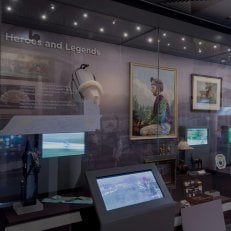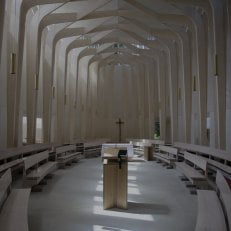A fresh look at arts funding?
Every three years when the National Portfolio announcement is made, questions are raised about arts funding in this country and how it could be done better. But while in previous years the accusation towards the Arts Council has gone little further than “salami slicing”, this time commentators seem to compare this country’s beleaguered arts funder to nothing less than a machete-wielding lunatic in a busy shopping centre; slashing at random at poor innocent bystanders who happen to be in the wrong place at the wrong time. This may seem a rather crude analogy, but the reference to “the wrong place at the wrong time”, is more relevant in this context than one might expect.
accusation towards the Arts Council has gone little further than “salami slicing”, this time commentators seem to compare this country’s beleaguered arts funder to nothing less than a machete-wielding lunatic in a busy shopping centre; slashing at random at poor innocent bystanders who happen to be in the wrong place at the wrong time. This may seem a rather crude analogy, but the reference to “the wrong place at the wrong time”, is more relevant in this context than one might expect.
Reliably, every 3 years, arts organisations who are recognized for being excellent at what they do, are deducted points for not being inclusive, accessible or diverse enough, or for not reaching out to the right audiences. In this latest round however, the Arts Council introduced a new penalty. Established institutions can now also see their funding cut if they happen to be based in the wrong place!
It seems the Government’s Leveling Up agenda has dominated the Arts Council’s decision making this time around, but there’s little evidence of consistency. Whilst ENO gets encouraged (or forced?) to try their luck in Manchester, other excellent companies, who already fulfilled the Levelling Up brief, were cut or lost their funding altogether. Glyndebourne’s touring and Learning & Engagement funding was halved and Cambridge-based Britten Sinfonia, who do excellent outreach work in the most under-served areas in the East of England, lost their entire grant. Welsh National Opera’s funding was severely cut, which prompted the company to announce last week that they could no longer afford their residency in Liverpool. This takes high-level arts provision away from the English regions; the very opposite of what ACE’s Levelling Up approach is aiming to achieve.
But what about excellence?
Whatever funding priorities are being applied, I don’t think anybody has ever lost their funding for not being good enough! It is generally accepted that the art that is created by many of England’s theatre companies, orchestras, dance or opera companies is of the highest quality. The problem is that excellence doesn’t appear to be a funding priority for the ACE.
The upheaval of the last couple of weeks has led to much resentment in the industry and commentators have voiced opinions about what can be done to stop the devaluation of the creative sector. Let me add my own suggestion:
Can we learn from the world of sport?
I may not be the first to propose this, but I’ve often wondered whether arts funding in this country should be split in two. I could see a system working where two statutory grant-makers operate entirely independently from each other, both funded through Lottery and DCMS. In the world of sport, for example, Sport England invests in the grassroots, primarily focused on accessibility and participation, making sure sport is available to all and encouraging everybody to get active. UK Sport on the other hand, deals with elite athletes who have the talent and determination to qualify for high-profile tournaments by setting the required times and benchmarks.
Socially desirable outcomes such as inclusivity and accessibility should be priorities for a grassroots arts funder. Encouraging participation in the arts across England, targeting those at risk of exclusion, socio-economic disadvantage or lack of opportunity is extremely important and this funder (let’s call them Funder-A) should pursue all the priorities the ACE currently applies: access to, and participation in the arts for people young and old from a wide range of abilities and diverse backgrounds and yes, an emphasis on a fair spread of opportunity geographically.
Next to that, I could see a Funder-B, similar to UK Sport where “Olympic-level” arts organisations can apply to get funding simply for producing a high-quality product; for being excellent. This might represent something more akin to ACE’s remit of several decades ago; ensuring the UK retains its place in the cultural leadership stakes and creates aspirational high art.
Commercial success is not a dirty word
I can already hear the protestations from those who will argue that quality in art is difficult to measure. Sports are eminently measurable, but you can’t apply a stopwatch to the arts. So, who decides what is good art? I came prepared for that question: Excellence shouldn’t just cover the on-stage performance, it should include the level of entrepreneurship, financial efficiency and return on investment within the producing company. We should also look at the ability to bring an audience along; commercial success should be taken into consideration. There is never an excuse for an empty house, however excellent you consider yourself to be. Alongside a world-class product, the best performing arts organisations run an efficient business model, enjoy a high profile and invest in the best available creative talent. Their reputation resonates around the world, bringing much needed credibility and recognition back to these shores. But they also manage to hook new audiences in and keep them there. In other words, they are “box office”, and box office CAN be measured.
The jewels in the crown
This funding wouldn’t fall only to the usual suspects. Extraordinary creative endeavor can be found in much less expected places. The English Concert, the orchestra that I used to run, has a considerable reputation in the USA. They tour there regularly and sell out Carnegie Hall every single year. The annual Handel opera in Carnegie Hall has become a fixture in the diaries of most music-loving New Yorkers. A massive achievement for a small orchestra, working on a tight budget. Yet, at the height of their international touring success, they were dropped from the NPO programme and never managed to get back in. This is because recognised international success is not an ACE priority, and The English Concert is chronically under-resourced and unable to meet the socially desirable outcomes the Arts Council needs to see. Like them, there must be many smaller organisations who are punching well above their weight and deserve to be subsidised, simply for moving and inspiring their audiences, for repeatedly achieving miracles on seemingly impossible budgets and for being a credit to this country’s creative sector.
Could it be AND instead of OR?
My proposed dual funding model should allow arts organisations to apply for funding from both channels. They could, for example, go to Fund A for a schools or community outreach programme and at the same time apply to Fund B for an ambitious new production. The two need to be kept separate and applications would be assessed entirely on their own merits.
Nobody doubts that pursuing inclusion, access and diversity is important and the arts, like sport, is a perfect vehicle for delivering these objectives. A fairer society is what we all want, however, there must be a way where that can be achieved without infringing on creative expression at its finest.
Gijs Elsen





